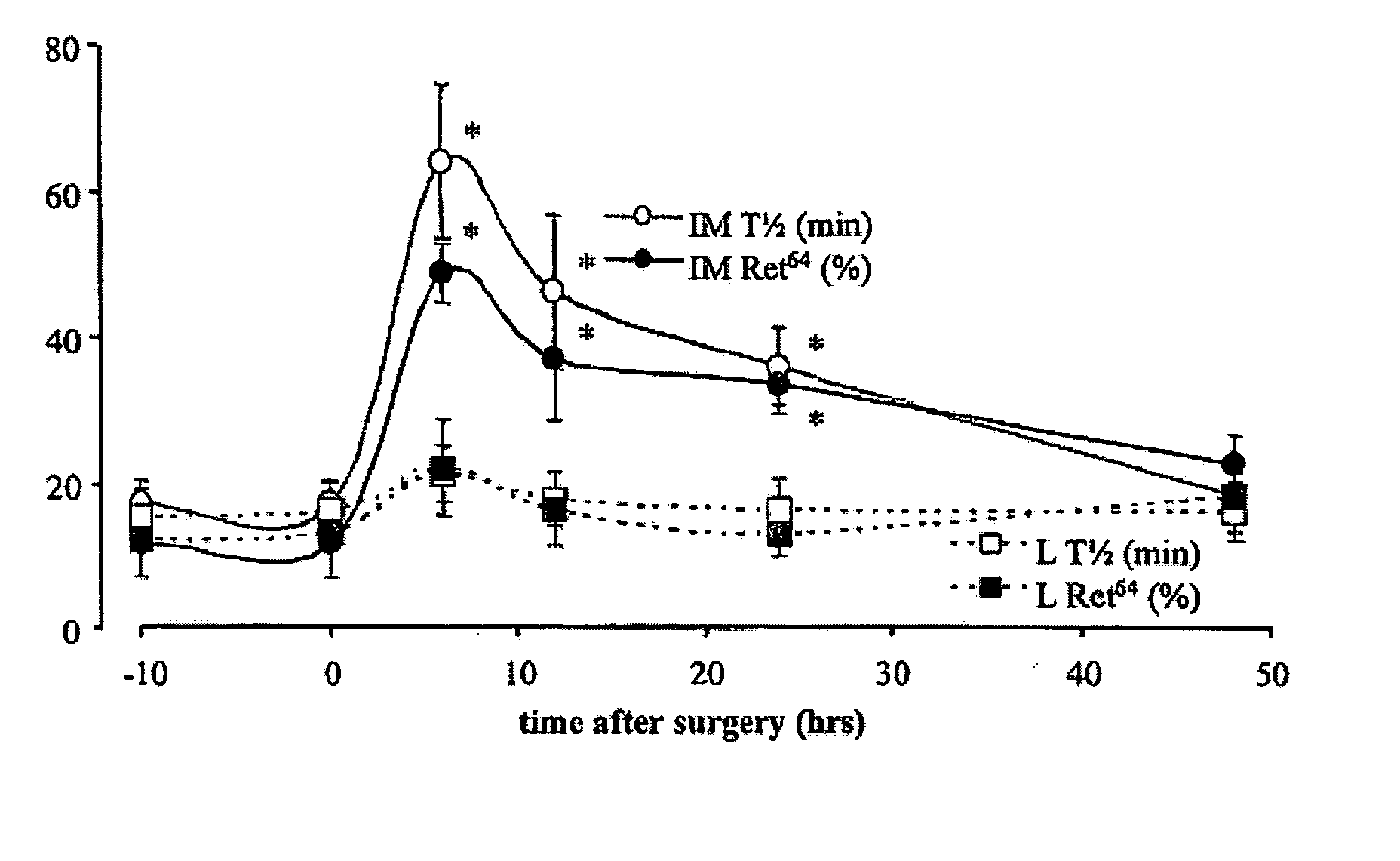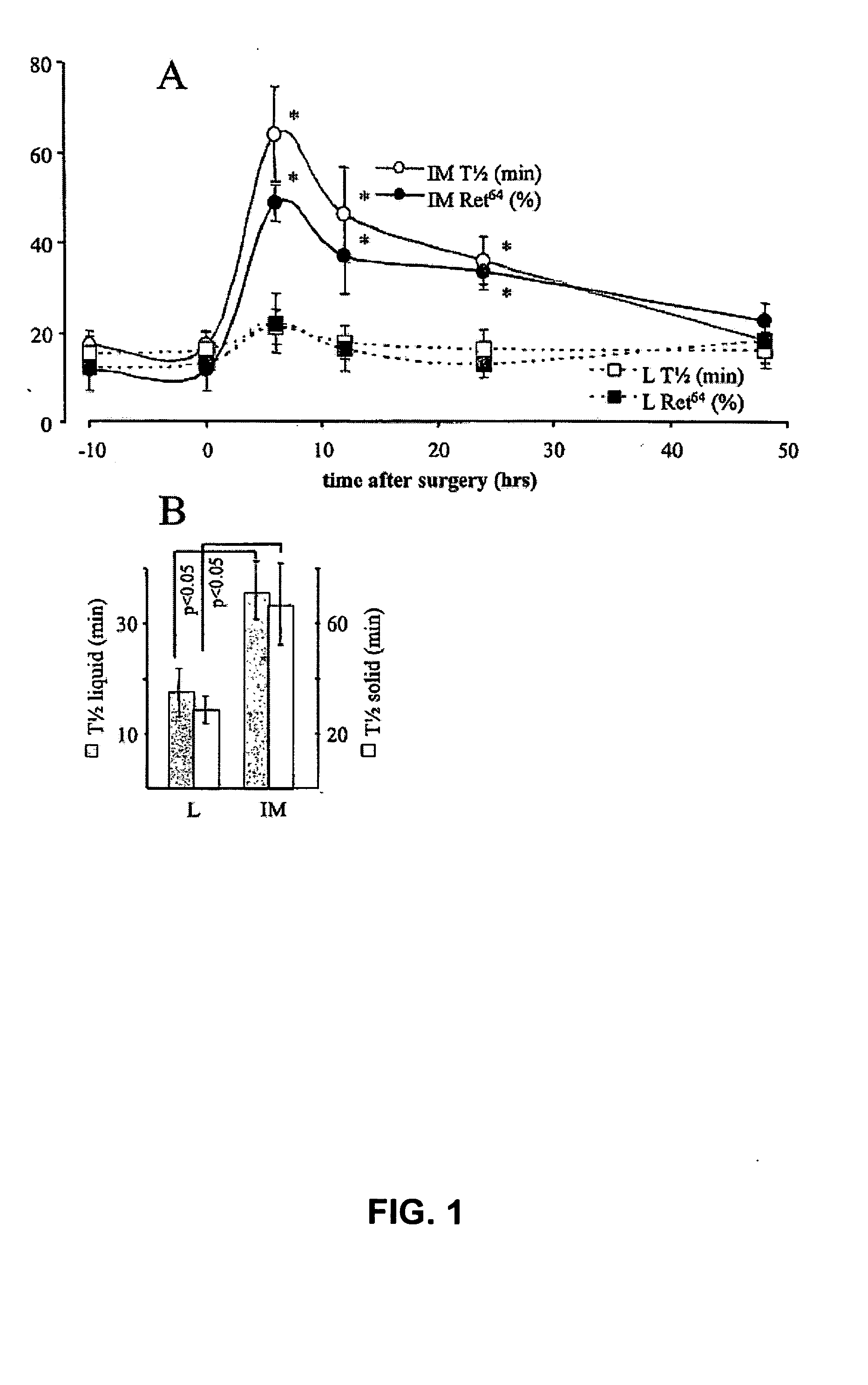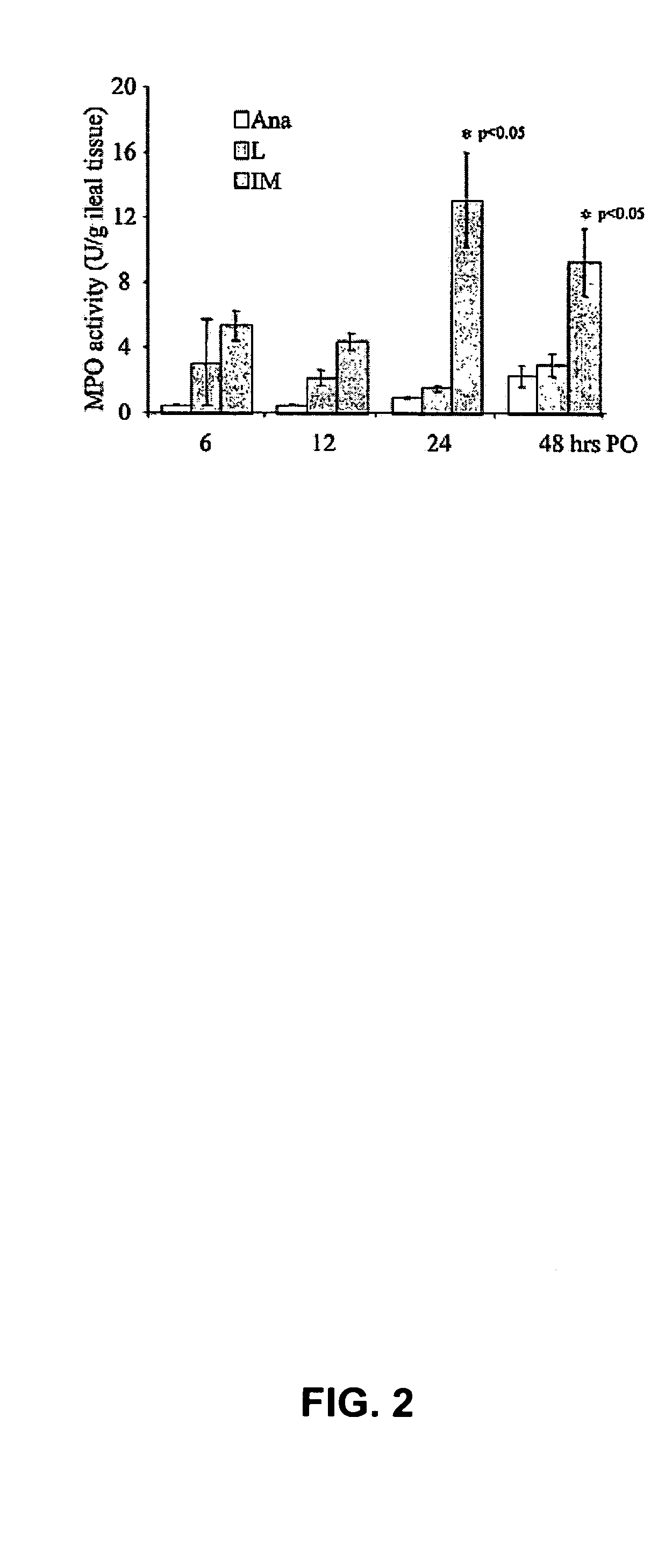[0007] Provided is the use of a compound capable of, at least in part, influencing an activity of a neural reflex pathway for the preparation of a medicament for altering the motility of the gastrointestinal tract. It is found in the present invention that decreased motility of the gastrointestinal tract during the sustained second phase of
postoperative ileus has an inflammatory origin that results in the triggering of at least one inhibitory neural reflex pathway via a neuro-immune interaction. Therefore, a compound capable of influencing an activity of the neural reflex pathway is capable of influencing the motility of the gastrointestinal tract. Preferably, activity of the neural reflex pathway is decreased. In postoperative
ileus, decrement of an activity of a neural reflex pathway results in a normalization of gastrointestinal motility.
[0011] Since it is now possible according to the invention to use a compound capable of influencing a neural reflex pathway to influence the motility of any part of the gastrointestinal tract, the compound can be used for treatment of gastrointestinal disorders. Particularly, hypomotility of the gastrointestinal tract that results from local
inflammation in the gastrointestinal tract can be very well treated with a compound of the invention. To achieve this goal, a medicament can be prepared comprising the compound and, for instance, a suitable carrier. The medicament can be administered to an animal or a human individual, for instance, before the gastrointestinal tract is manipulated. In that case, the medicament can serve as a prophylactic against sustained gastrointestinal hypomotility. The medicament can also be administered after a gastrointestinal operation is performed. The medicament can then still serve as a prophylactic, because the second stage of postoperative
ileus starts several hours after
surgery. Additionally, the medicament can be used to treat a patient that is already suffering from gastrointestinal hypomotility. Thus, in one aspect, the invention provides a use of a compound capable of, at least in part, altering activation of a neural reflex pathway for the preparation of a medicament for prophylaxis and / or treatment of hypomotility of the gastrointestinal tract. Prophylaxis and / or treatment can shorten the duration of postoperative
ileus, as compared to untreated individuals. Prophylaxis with a compound of the invention can also, at least in part, prevent the occurrence of hypomotility. Methods to prepare a medicament are well known in the art and need no further explanation here.
[0014] After manipulation of a part of the gastrointestinal tract, immunocyte recruitment is observed. These immunocytes appear to be involved in stimulation of an activity of a neural reflex pathway, resulting in impaired motility of the gastrointestinal tract. If immunocyte recruitment is, at least in part, prevented, stimulation of an activity of the neural reflex pathway is, at least in part, indirectly prevented as well. Thus, instead of directly influencing the stimulation of an activity of a neural reflex pathway by an immunocyte, stimulation can also be influenced indirectly by avoiding the presence of immunocytes. One embodiment of the invention, therefore, provides a use of the invention, wherein activity of the neural reflex pathway is decreased by, at least in part, preventing immunocyte recruitment. Preferably, leukocyte recruitment is, at least partly, prevented.
[0016] Besides releasing pro-inflammatory mediators, mast cells and macrophages are capable of interfering with an activity of a neural reflex pathway. Typically, activity is stimulated by macrophages and mast cells, for instance, by releasing mediators such as
histamine,
tryptase and / or tachykinins which are capable of directly sensitizing
afferent nerve endings. Therefore, an activity of a neural reflex pathway can also be decreased by preventing, at least partially, stimulation of the pathway by a macrophage and / or
mast cell. A use of the invention wherein activity of the neural reflex pathway is decreased by at least in part preventing stimulation of the pathway by a macrophage and / or
mast cell is, therefore, also herewith provided. Preferably, stimulation of activity of a neural reflex pathway is prevented by, at least in part, preventing release of IL1β
histamine,
tryptase, and / or tachykinins by the macrophage and / or mast
cell.
[0032] An activity of a neural reflex pathway can also be influenced by antagonizing the activation of mast cells. Hence, pharmaca that stabilize mast cells and / or antagonize actions of
histamine released from mast cells and / or intervene with the activation or
degranulation of mast cells are suitable for a use of the invention. Preferably,
ketotifen, doxantrazole, or cromoglycates are used. More preferably, a use of the invention is provided wherein the compound comprises
ketotifen. Immunocyte recruitment can also be prevented by an agent (such as, for instance, a
nicotinic receptor agonist) or intervention (such as, for instance,
vagal nerve stimulation by electrical stimulation or an agent such as CNI-1493) that inhibit macrophages and / or other inflammatory cells to release their substances.
 Login to View More
Login to View More  Login to View More
Login to View More 


